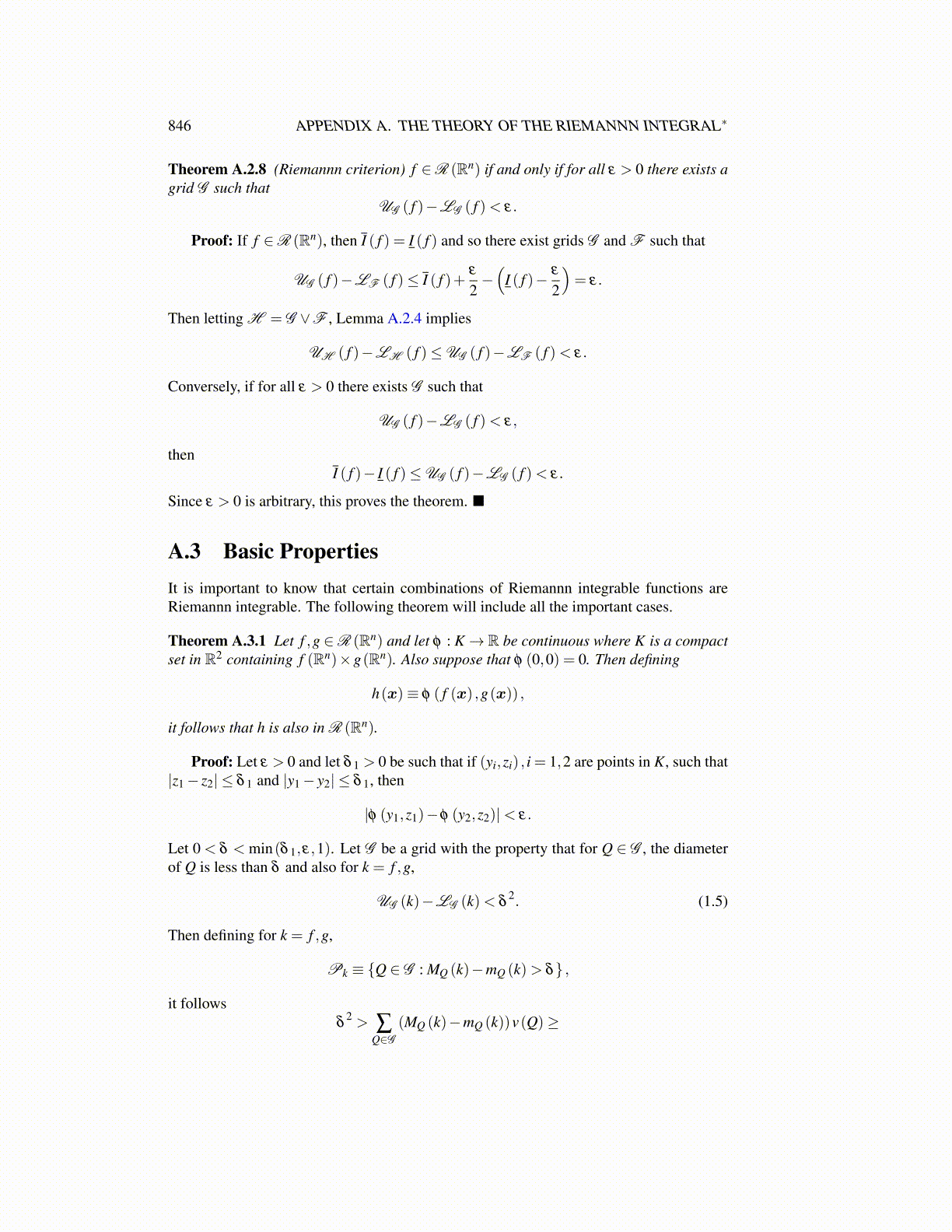
846 APPENDIX A. THE THEORY OF THE RIEMANNN INTEGRAL∗
Theorem A.2.8 (Riemannn criterion) f ∈R (Rn) if and only if for all ε > 0 there exists agrid G such that
UG ( f )−LG ( f )< ε.
Proof: If f ∈R (Rn), then I ( f ) = I ( f ) and so there exist grids G and F such that
UG ( f )−LF ( f )≤ I ( f )+ε
2−(
I ( f )− ε
2
)= ε.
Then letting H = G ∨F , Lemma A.2.4 implies
UH ( f )−LH ( f )≤UG ( f )−LF ( f )< ε.
Conversely, if for all ε > 0 there exists G such that
UG ( f )−LG ( f )< ε,
thenI ( f )− I ( f )≤UG ( f )−LG ( f )< ε.
Since ε > 0 is arbitrary, this proves the theorem. ■
A.3 Basic PropertiesIt is important to know that certain combinations of Riemannn integrable functions areRiemannn integrable. The following theorem will include all the important cases.
Theorem A.3.1 Let f ,g ∈R (Rn) and let φ : K→ R be continuous where K is a compactset in R2 containing f (Rn)×g(Rn). Also suppose that φ (0,0) = 0. Then defining
h(x)≡ φ ( f (x) ,g(x)) ,
it follows that h is also in R (Rn).
Proof: Let ε > 0 and let δ 1 > 0 be such that if (yi,zi) , i = 1,2 are points in K, such that|z1− z2| ≤ δ 1 and |y1− y2| ≤ δ 1, then
|φ (y1,z1)−φ (y2,z2)|< ε.
Let 0 < δ < min(δ 1,ε,1). Let G be a grid with the property that for Q ∈ G , the diameterof Q is less than δ and also for k = f ,g,
UG (k)−LG (k)< δ2. (1.5)
Then defining for k = f ,g,
Pk ≡ {Q ∈ G : MQ (k)−mQ (k)> δ} ,
it followsδ
2 > ∑Q∈G
(MQ (k)−mQ (k))v(Q)≥